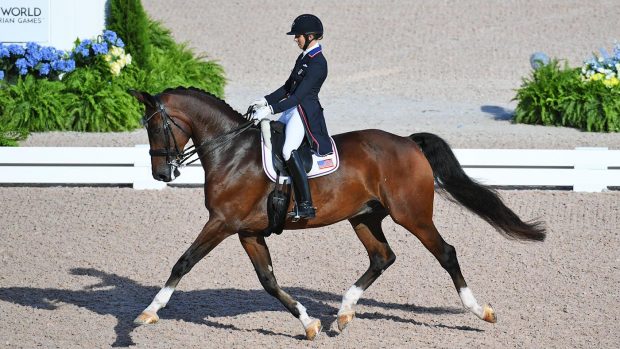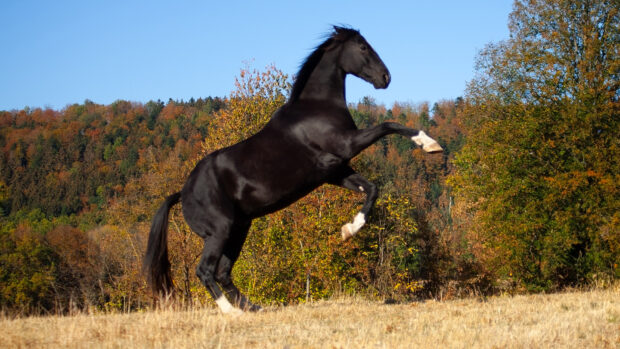The equestrian industry has to act to ensure it is viable – as 58% of employers fear they will not be able to pay staff the national minimum wage (NMW) in future.
The Government has announced that the NMW will increase from £10.42, for those over 23, to £11.44 from April 1, and this will apply to all those aged over 21.
Aiming to identify the impact this would have, the British Grooms Association (BGA) and Equestrian Employers Association (EEA) conducted a study. It found that 90% of employers are concerned about the increase, and the lowering of the age threshold, and that 21% may have to close their businesses as a result.
“There has to be change, to be viable, as well as legal,” BGA and EEA founder Lucy Katan told H&H. “It’s not viable at the moment, in so many ways. We can’t get away from the price of hay and straw, and other elements, but horses can’t care for themselves.”
Ms Katan has long advocated for working smarter, not harder; questioning whether all grooms need to arrive at 7am, and whether, as long as equine care and welfare is not affected, mucking out has to be done by 8am, for example, or horses groomed to perfection for every ride.
“We must see modernisation in the equestrian working day, or the industry will not be viable,” she said. “In our survey, 46% of employers say they will have to reduce staff hours. With the average groom’s week 50-65 hours, this is a progressive resolution. Yards must operate more efficiently – later starts, shift work, flexible working, streamlining, and reviewing livery packages. It is crucial that, especially in the competition sector, businesses that are not viable take a much-needed review of their working day. If a business is not viable it has two choices; either alter the operation or cease to trade.”
Ms Katan added that owners need to be realistic about what it costs to keep horses on livery and be prepared to pay accordingly, with which eventer Ibby Macpherson agrees.
Ibby posted on social media about the “awkward topic of competition horse livery”, stating that she had calculated the cost at £256 per horse, per week, or £346 including exercise at £15 per hour.
“This is where the equine industry needs a kick up the backside,” she wrote. “Riders putting costs up means they can pay staff properly as well.”
Ibby told H&H her post had “kicked a hornets’ nest” but that it needed to be said.
“Livery clients don’t seem to see the depth of cost behind the face value of the service,” she said. “The horse industry is a hobby for many but it’s the bread and butter for many others. So many have to teach or sell horses to make it work but then you’re financing someone else’s hobby. Doing it ‘for the love of it’ doesn’t wash any more; I can’t pay my energy bills with ‘the love of it’.”
Ibby said she is not sure what the answer is. but that the industry needs to reevaluate itself and look hard at its viability.
“I can see why so many yards have gone bang as it’s not sustainable,” she said. “People have to want to change, and people wonder why there are no good staff any more. Speaking out has caused me to get a lot of flak but I’m happy to ‘take one for the team’ if it makes people more aware of the costs on both sides of the coin. Hopefully it will make owners more aware of the depth of costs and yard owners reevaluate what they charge to make businesses more sustainable – bring on the change!”
A British Equestrian (BEF) spokesman told H&H industry viability is something the BEF has been working on with the British Horse Society, Association of British Riding Schools, Pony Club and Riding for the Disabled, as well as the EEA and BGA for some time – and that Sport England has found that the current economic situation is having a negative impact across sport and physical activity.
“Wages is one element but when you add running cost increases, declining facilities through lack of investment and so on, it is a concern,” she said.
“Via our ‘health of riding schools’ work and the insight it’s provided over two years, we’ve been working with member bodies in trying to support with wider education. As an example, we funded a session looking at income diversification through setting up CIC arms alongside the more traditional sole trader model so they can generate more income through grants. Through the survey and feedback, centres told us what help they need and we’re working to deliver that with member bodies.
“This work focuses on riding schools but our participation team will continue to work with member bodies on the wider concerns. We all want the equestrian sector to be a rewarding place to work in a variety of roles, and will continue to do what we can through support and education for employers and workers.”
You might also be interested in:

Why owners and livery yards must acknowledge the true cost of keeping horses

‘If you can’t pay staff properly, your business isn’t viable’: yard owner speaks out on ‘self-made’ staffing crisis

‘I can’t afford to eat properly’ says groom, as research shows illegal employment still an issue

Subscribe to Horse & Hound magazine today – and enjoy unlimited website access all year round
Horse & Hound magazine, out every Thursday, is packed with all the latest news and reports, as well as interviews, specials, nostalgia, vet and training advice. Find how you can enjoy the magazine delivered to your door every week, plus options to upgrade your subscription to access our online service that brings you breaking news and reports as well as other benefits.




